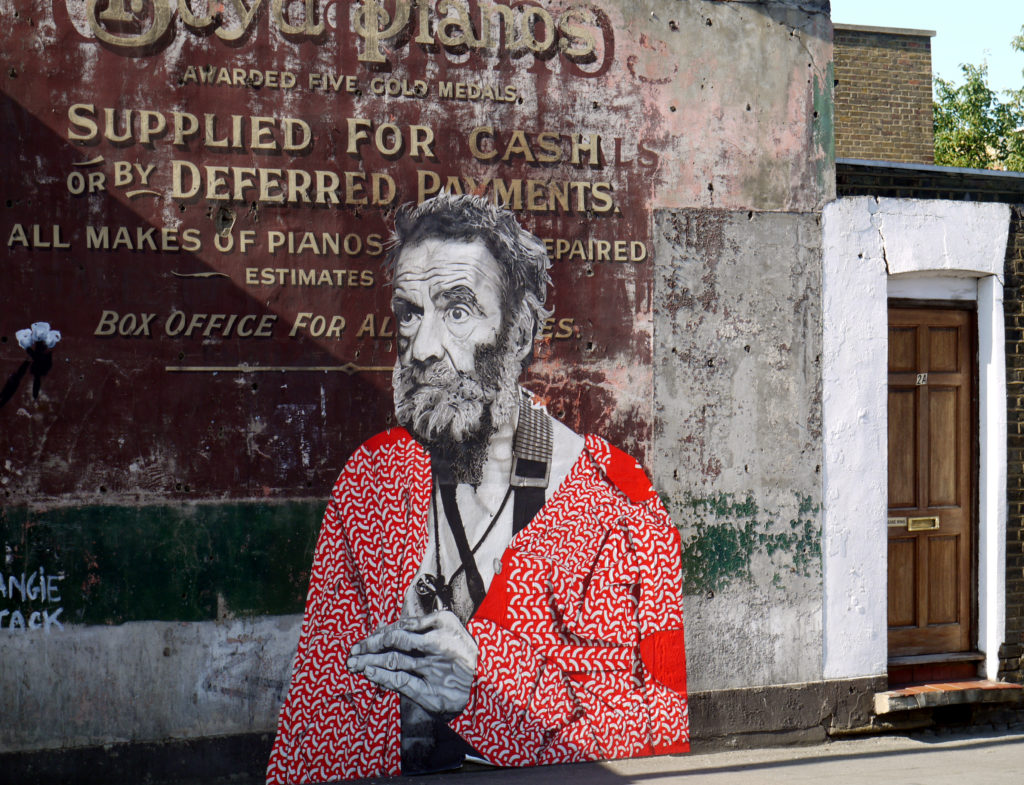11 Aug 2010
Street Art

sarflondondunc, ever alert to the gradual shifts in our Ghostsigns landscape, alerted me to this new piece of street art positioned on the great Boyd Pianos sign on Shacklewell Lane, Hackney.
It’s by the Canadian artist Specter and is part of the ‘If I saw you in heaven’ project. This attempts to “address the issue of homelessness and our apathy towards it” by presenting homeless people as “an image of humanity instead of a blight”.
In talking about the positioning of her/his Specter states that a “renegade approach allows me to select specific locations that correlate with my artistic objective”. The extent to which this is the case here is debatable and while I have put the question of why this location was chosen to Spector directly I haven’t yet received a response.
While my views on organised efforts to protect Ghostsigns have reached a pragmatic conclusion that it is better to use our energy to photograph and research them, I do feel regret towards this and other overt actions that damage or destroy them, especially when this involves great examples such as this one.
***Note: 9th September 2010***
I contacted Specter about the piece and you can read a more detailed interview here, but these were the comments on this topic in particular:
“At its essence graffiti and street art is both the work by the artist and the public space in which it is put up. As an artist every wall in the public sphere is fair game. I go to great lengths scouting locations for my work and often look for hand-painted signs and walls to revive in the collective eye with my hand-painted installations. I have absolutely no remorse for any placement of my work.
I choose that spot for a reason. I like to involve my pieces in a dialogue with their surroundings. The art is not just my painting it is the entire environment, the interaction of all parts.
I identify very strongly with these old signs and feel that my additions are just part of the evolving cycle of their lives. My incorporations are changes to their ephemeral existence, often highlighting their under appreciated being.”


